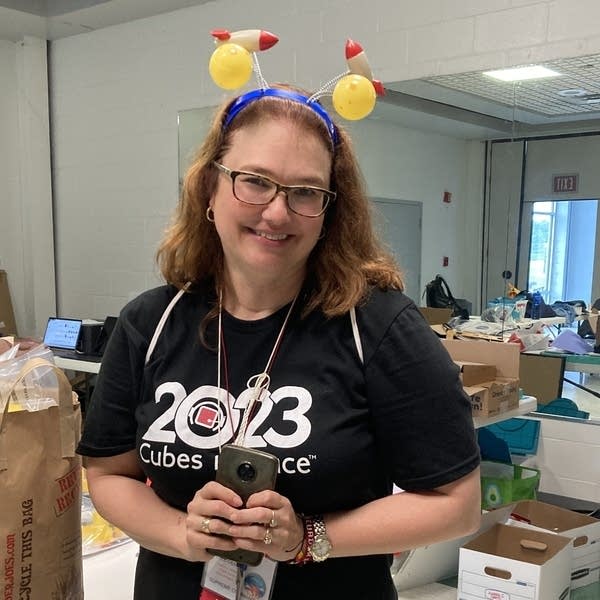Every year, grade school students gather at Nasa’s Wallops Flight Facility in Virginia to send science experiments into space. Now, these experiments have to be tiny, fitting into a 6×6 centimeter cube, which can either be flown into space in a research rocket or a scientific balloon.
After the cubes are brought back to Earth, the students get together to analyze their experiments and see what happened while they were floating up there for 15 or so hours. This year, hundreds of students from the U.S., Canada and Colombia were in Virginia showcasing their experiments.

Amber Agee-DeHart: We are here in the Chincoteague Center here in town. And what you’re seeing is, we probably have 300 people that are here. And we have over 150 students that are exhibiting about their experiments that have flown on sounding rockets. But we also fly on NASA’s high altitude balloons, the opportunity there is to do some really robust science because it’s up for five to 15 hours. And we’re looking at okay, yes, we’re using space exploration or space is a lab. But how can that impact what we do here on Earth?
Sam Jackson: So our experiment is testing whether dehydrated blood can survive rocket travel. Dehydrated blood can be used when blood needs to be stored for a long time or shipped a long distance in dangerous environments. It survives for much longer than liquid blood, and is much more stable. Once we get our experiment back, well run post tests and compare the results to see if the blood is still viable for transfusion.
Isaiah Falconer: What we want to know is the effect of cosmic radiation on the molecular structure of protected and unprotected epinephrine and of the EpiPen solution. We learned that like if you leave an EpiPen in the sun, like there it can, like degrade and not like be as effective. So we injected some EpiPen solution into different vials using basically a thick like cleaning sponge and paper clips to protect the vial. And then we use a syringe to separate it evenly into different ones. And then we coded basically the vial, we put the vial in a bit of, like tea and coffee and cotton pads so it wouldn’t shatter while being rattled or in the cube.
Kara Lima: We think that people with EpiPens or people that need epinephrine in space for things like asthma attacks and cardiac arrest will be able to know that the materials necessary will not be affected because we will be able to protect them and they will be able to safely go to space in the near future.
One note on that last experiment: Back in March, students at Saint Brother André Elementary School in Ontario, Canada, discovered that EpiPens might actually be dangerous to use in space. They found that some of the epinephrine in their cubes had turned into poisonous chemicals when they came back to Earth.
Nasa last week announced it’s investing $150 million in space tech, money that can also be used here on Earth for commercial purposes. The space agency chose 11 companies — six of which are smaller players. One big piece of space tech Nasa plans to look at? Generating solar power on the moon and the possibility of getting humans to return there.